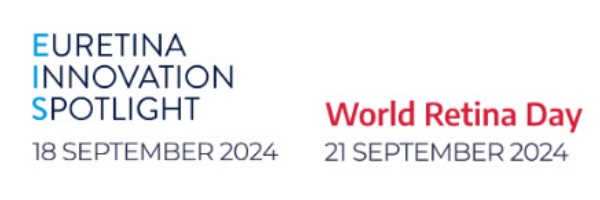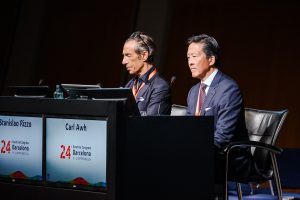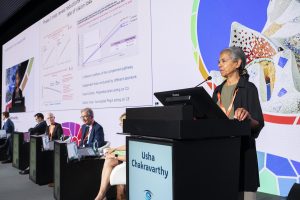Papers presented Friday afternoon at Euretina Session 6 focusing on late-breaking news from clinical trials were chosen for their value in highlighting some of the most cutting-edge and clinically significant research findings, said session co-moderator Dr Martin Zinkernagel (Switzerland).
“It was challenging to select the most impactful studies from a vast pool of high-quality submissions for presentation at this session, given the excellent range of innovative approaches and emerging therapies that were represented,” Dr Zinkernagel commented.
“The presented papers underscore the dynamic nature of retinal research and the ongoing efforts to enhance therapeutic options. The advancements not only represent significant strides in the treatment of retinal diseases but also highlight the complexities and challenges faced in translating these innovations into clinical practice,” he said.
The reports covered a spectrum of retinal indications. The topics included treatments for geographic atrophy (GA) secondary to age-related macular degeneration (AMD). In this area, Dr Anat Loewenstein (Israel) reported data from the phase 2a dose-ranging SIGLEC trial that is exploring gene therapy with a single injection of AVD-104, a novel agent that acts to repolarize macrophages and inhibit complement overactivation.
The development of the PRIMA retinal implant system for GA secondary to AMD was discussed by Dr Frank Holz (Germany) who reported interim safety and visual acuity outcomes from 12 months of follow-up in the pivotal PRIMAvera trial, which enrolled 38 patients with fovea-involving disease. The data also showed patients can use the device for some reading in their daily life.
Other presented research reported outcomes for treatment of neovascular AMD. Dr Ashish Sharma (India) presented data on visual outcomes and safety from the FORCE study investigating treatment with a ranibizumab biosimilar (FYB-201) in clinical settings. The report included findings from 1230 patients with a mean follow-up of 15.7 weeks and suggested that the biosimilar agent is efficacious and safe.
Dr Clare Bailey (United Kingdom) summarised preliminary data collected in the VOYAGER study, which is a multi-country prospective non-interventional study investigating outcomes of faricimab injections in treatment-naïve patients with neovascular AMD or diabetic macular oedema. She concluded, “The global VOYAGER study will collect widely generalisable data on the effectiveness, safety and durability of faricimab in clinical practice.”
Novel investigational treatments for diabetic eye disease were the focus for two other presented papers. Dr Veeral Sheth (United States) summarised promising safety and efficacy results from the 48-week, phase 1 HELIOS trial evaluating a sustained-release, bioresorbable implant containing the tyrosine kinase inhibitor axitinib (OTX-TKI) for non-proliferative diabetic retinopathy without center-involving diabetic macular oedema. Dr Arshad Khanani (United States) reported results from a phase 2a dose-ranging study investigating treatment for diabetic macular oedema with RZ402, an oral once-daily plasma kallikrein inhibitor. He concluded that the results support advancement into longer duration phase 2b/3 studies.
Results from the FIREFLEYE next study evaluating the efficacy and safety of intravitreal aflibercept versus laser for treating retinopathy of prematurity in children 3 years of age added critical information for understanding pharmacologic intervention in this vulnerable group. The research, presented by Dr Andreas Stahl (Germany), showed overall that aflibercept injection was effective and generally well tolerated through 3 years of age.
The safety and efficacy of oral brepocitinib, a tyrosine kinase 2/janus kinase 1inhibitor, for treating active non-infectious uveitis was reported by Dr Dilraj Grewal (United States). He presented results from follow-up to week 24 in the 52-week phase 2 NEPTUNE study. He reported brepocitinib reduced treatment failure in a dose-dependent manner despite more rapid corticosteroid tapering than historical controls and was generally well-tolerated. A phase 3 study is underway.
Moving away from therapeutic studies, Dr Sunil Mamtora (United Kingdom) presented research identifying risk factors for rhegmatogenous retinal detachment (RRD) within 12 months after cataract surgery. The investigators plan to use the findings to create a calculator for estimating the probability of post-cataract RRD.
Registered attendees can watch the entire Session ON DEMAND.
























































































































